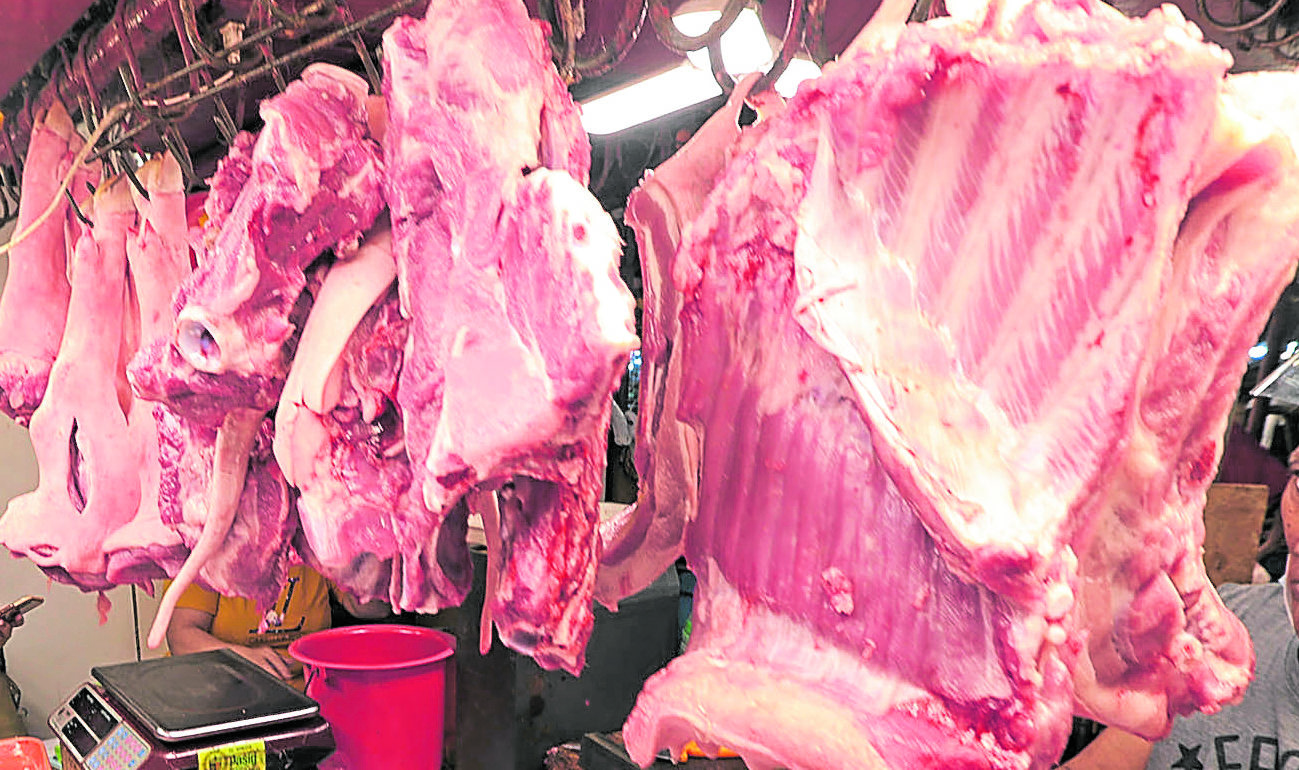The rate of increases in the prices of basic goods and services remained above the government’s target range in May, as expensive food, especially pork, and higher transport costs kept inflation elevated at 4.5 percent —the same rate as that in the two previous months.
As such, National Statistician Dennis Mapa told a press conference on Friday that headline inflation averaged 4.4 percent during the first five months, a faster rate of increase in prices of basic commodities than the 2 to 4 percent target for the year.
The Philippine Statistics Authority (PSA) data showed that price levels in May further rose by 0.2 percent compared to prices last April, when the month-on-month increase was also 0.2 percent from March prices.
Mapa said meat prices climbed 22.1 percent year-on-year in May, with pork still the most costly given a 58.4-percent jump, alongside double-digit price hikes in beef and chicken that month. He noted that the monthly spike in meat prices started in December last year and so far peaked at the both 22.1-percent increases posted in April and May.
Also in May, fish prices rose by a faster 7.8 percent year-on-year from 6 percent a month ago.
As a whole, prices of food and nonalcoholic beverages increased 4.6 percent year-on-year in May, slightly slower than the 4.8-percent hike in April.
As this developed, the Bangko Sentral ng Pilipinas (BSP) said the latest consumer price index came in within its forecast range of 4 to 4.8 percent, and “consistent with expectations that inflation could remain above the high-end of the target range during the quarter as meat and oil prices remain elevated.”
Within BSP’s forecast range
“Nonetheless, the BSP expects inflation to decelerate to within the target range by the second half of 2021 to 2022 as domestic supply bottlenecks are addressed,” it added in a statement.
In particular, the regulator said the implementation of the temporary reduction in tariffs on imported pork was seen to address supply constraints and ease price pressures on meat products going forward.
“Thus, the projected decline of inflation depends crucially on the timely arrival of pork to help stabilize domestic prices,” it said.
In a statement on Friday, Socioeconomic Planning Secretary Karl Kendrick Chua also expressed optimism that the lower tariffs and quota on imported pork which started in mid-May would pull prices down as early as this month of June.
The National Economic and Development Authority, which Chua heads, noted that meat inflation in May was 0.1 percent lower than the April rate, the first time in eight months to post month-on-month slowdown.
Counting on EOs 133, 134
“We expect to gradually see the benefits of Executive Order (EO) Nos. 133 and 134 in the coming months to help curb pork prices and provide relief to consumers and households. As we reopen our economy, we will continue to work to keep other drivers of inflation stable to ensure Filipinos recovering their jobs and income will not see their income eroded by higher prices,” Chua said.
Since social distancing remained amid prolonged quarantine while normalizing global oil prices spilled over locally, transport costs rose by 16.5 percent year-on-year last month, although slower than April’s 17.9 percent, Mapa said.
Price hikes in petroleum and fuels quickened to 33 percent year-on-year from 32 percent in the previous month.
Tricycle fares posted a slower year-on-year increase of 38.8 percent from April’s 48.4 percent, but Mapa mainly attributed it to base effects as year-ago fares jumped when economic activities started to gradually resume after the imposition of the most stringent COVID-19 quarantine in the region which stopped 75 percent of the economy.
Jeepney fare also rose 6.3 percent year-on-year last month, similar to April’s increase.
The reopening of restaurants and services like barbershops also jacked up prices of meals and haircuts by 4.3 percent and 11.3 percent, respectively, last month, faster compared to their April inflation.
Meanwhile, the inflation rate among the poor belonging to the bottom 30-percent income households eased to 4.5 percent year-on-year in May, the slowest so far this year.
But end-May inflation among poorer families averaged 5 percent—still higher than the headline rate. This meant the poor had to shell out more when buying basic necessities.
Mapa said cheaper rice and vegetables mainly helped ease inflation among the poor in May. Inflation across all food and nonalcoholic beverages eased to 3.4 percent year-on-year last month from 3.9 percent in April.
Poor households also benefited from slower year-on-year fare hikes in the modes of transportation they used like tricycles, jeepneys, as well as ferries and ships, Mapa said.
Overall transport inflation among the poor remained elevated at 22.1 percent year-on-year in May although below April’s 23.1 percent. INQ
